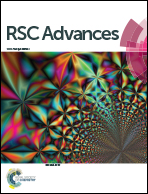Effect of annealing temperature on silicon-based MoSx thin film solar cells
Abstract
A suitable annealing temperature was found by adopting the sol–gel method to prepare silicon-based molybdenum sulfide film heterojunction solar cells. As shown by the results, a change in the efficiency of the solar cells, which was attributed to the fact that as the annealing temperature rises, the degree of crystallization of the film increases continuously, the degree of order of the crystal particles goes up first and then goes down, and the temperature change affects the proportion of Mo in different valence states. By comparison, it was found that when the temperature reached 500 °C, the degree of order of the film was raised and the film was in the initial zone from the amorphous to the microcrystal phase change and the proportion of Mo 6+ was relatively large, increasing the conversion efficiency of the device power to 7.55% and laying a good basis for preparing high-performance solar batteries made in the two-dimensional materials. When the annealing temperature continues to rise, the intergranular defects increase, and the overall degree of order of the film decreases. Furthermore, the highly crystalline thin films and the improvement in the device efficiency can be controlled if we obtained the relationship between the annealing temperature and the layers of the two-dimensional materials.



 Please wait while we load your content...
Please wait while we load your content...